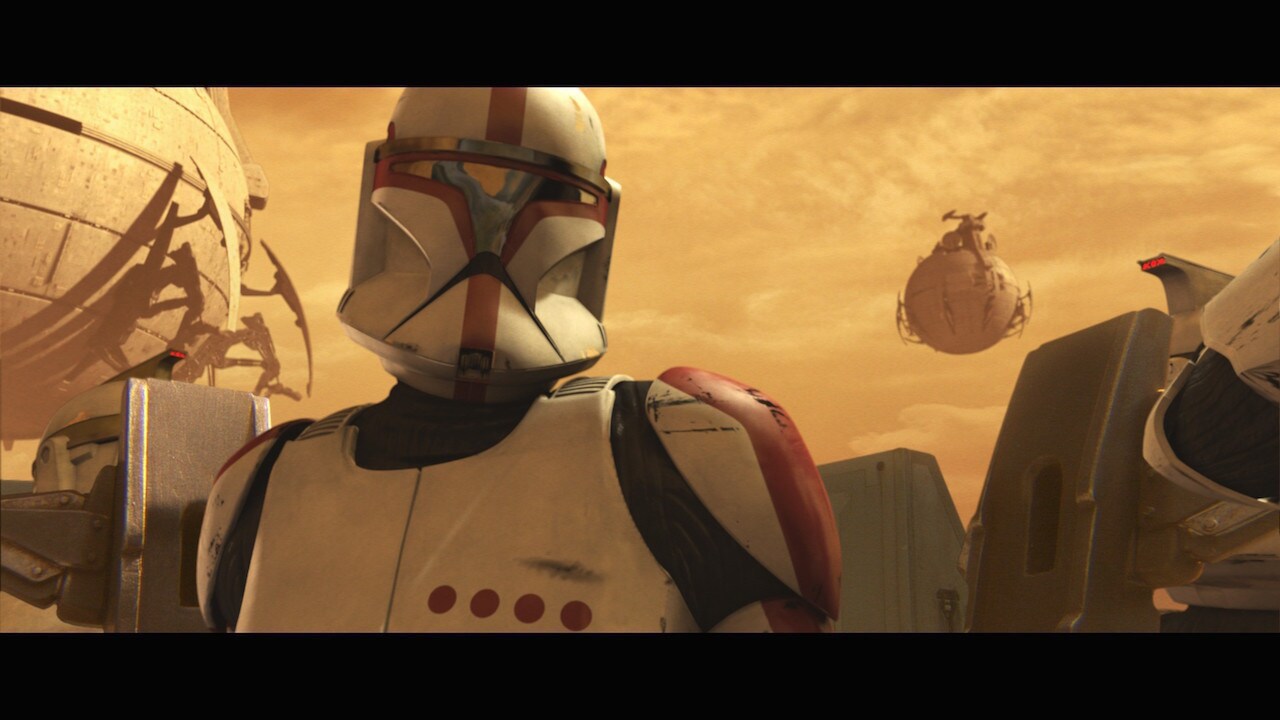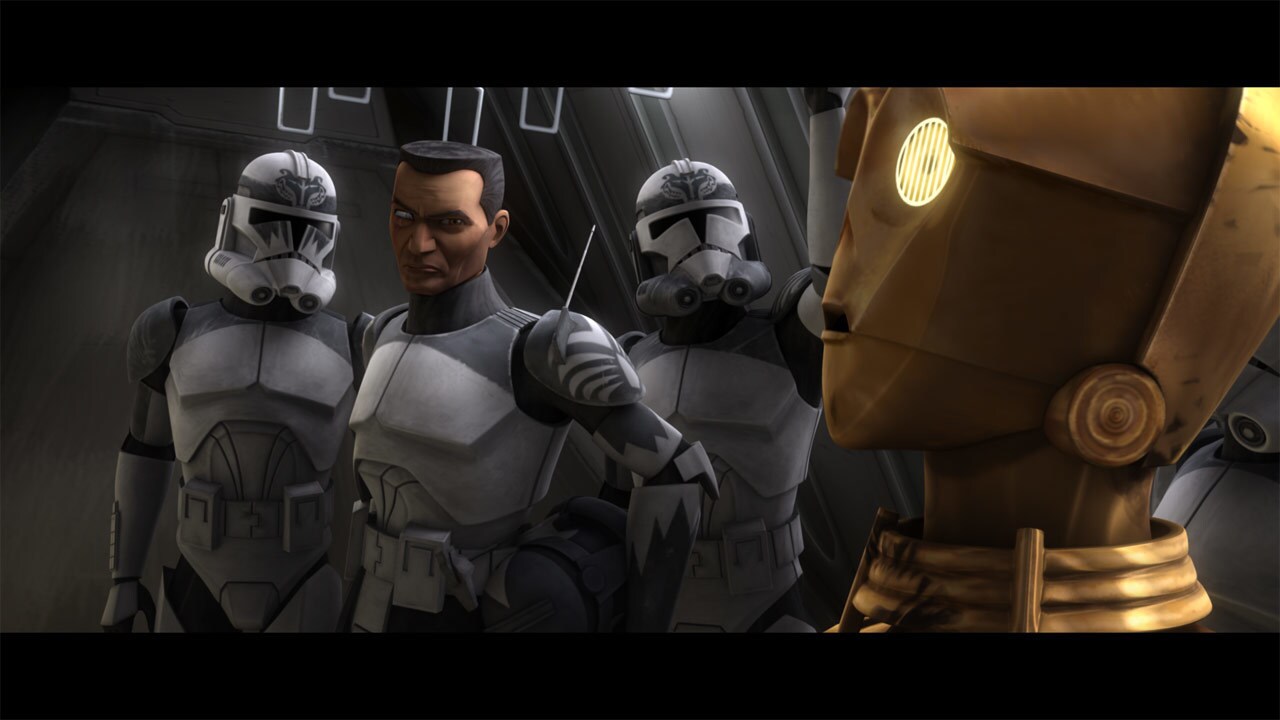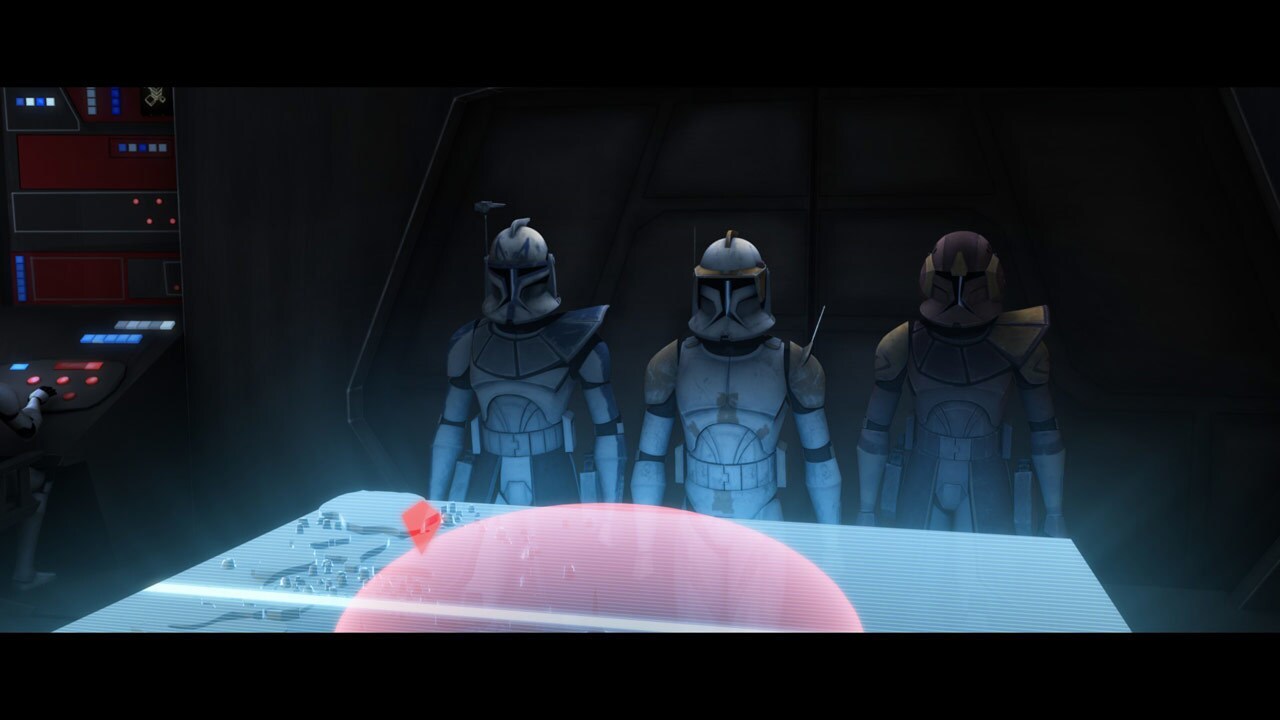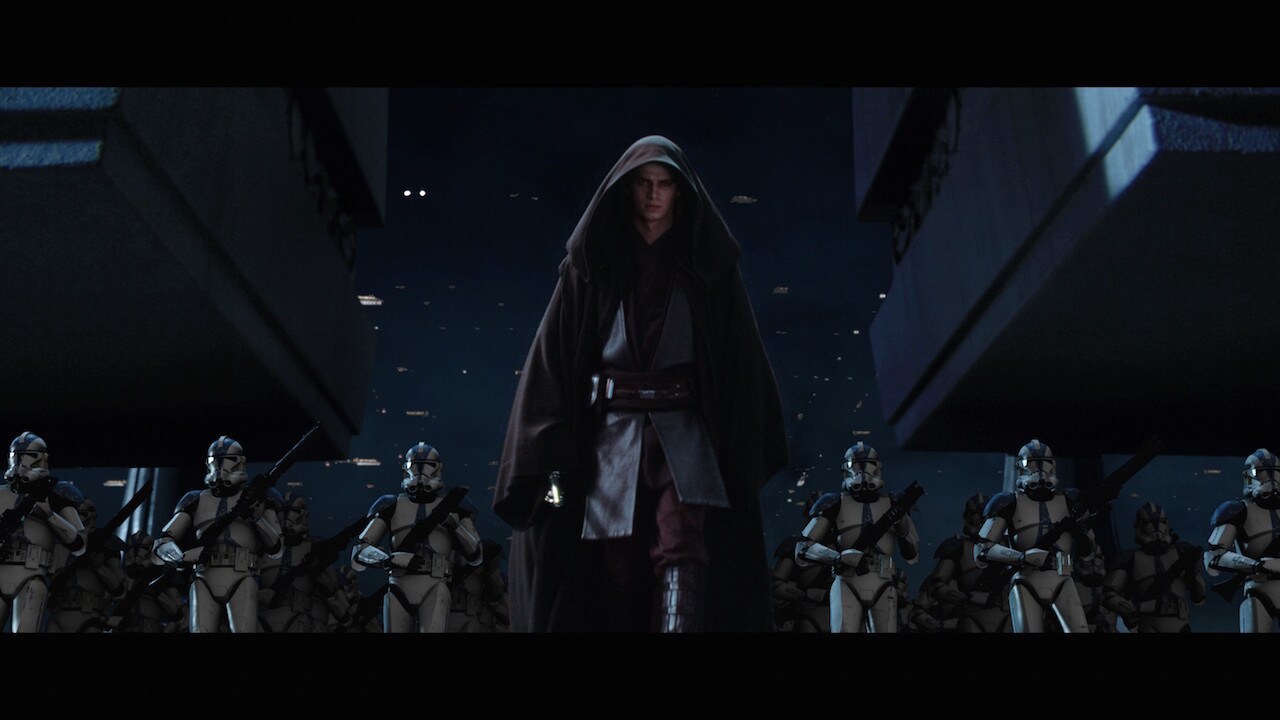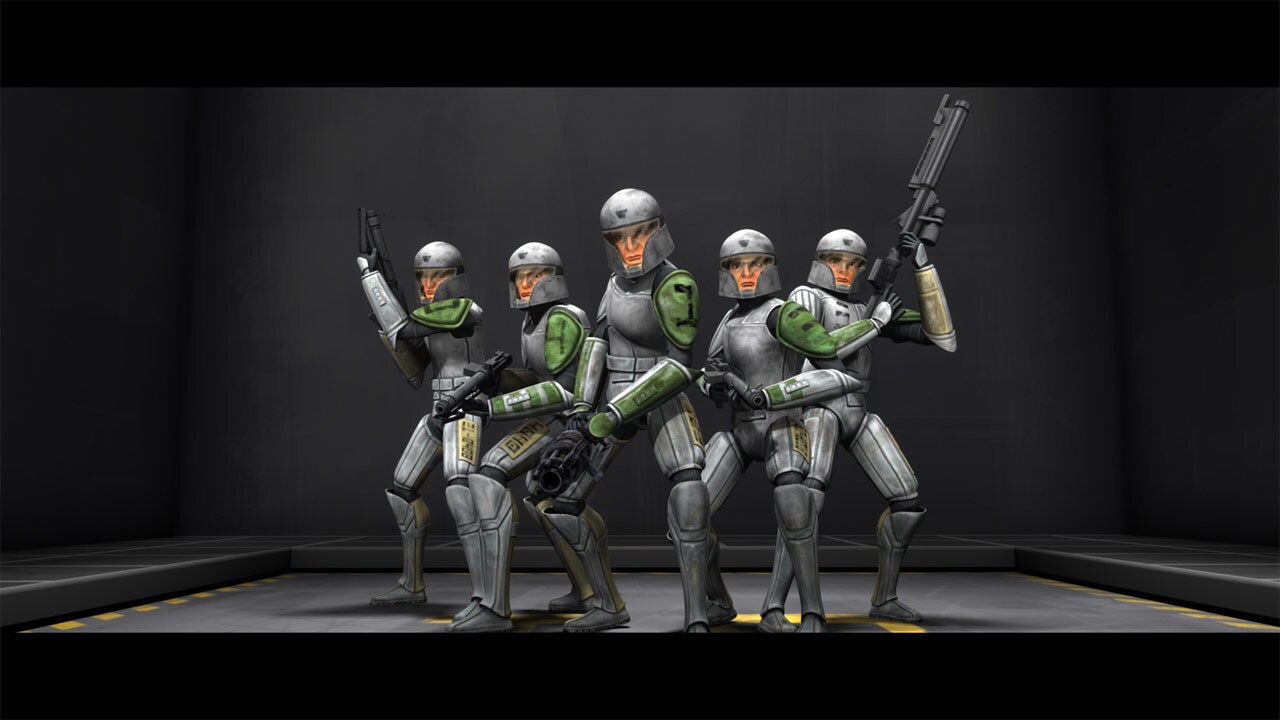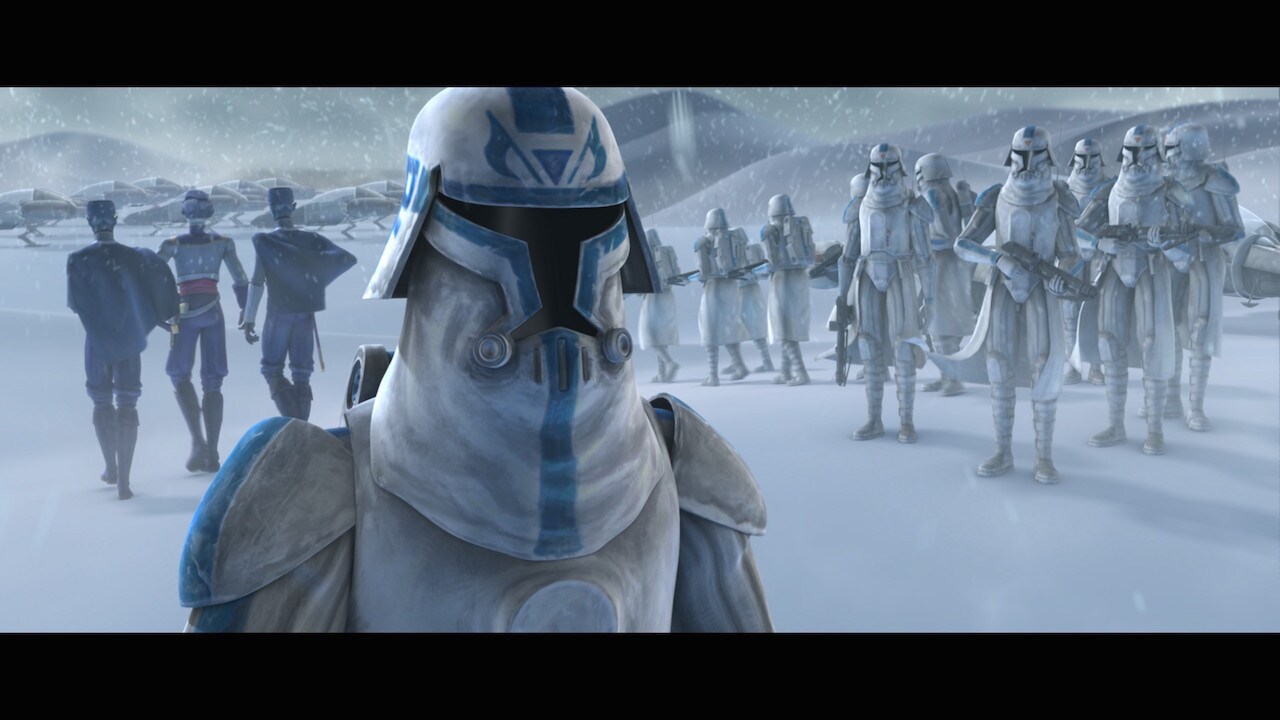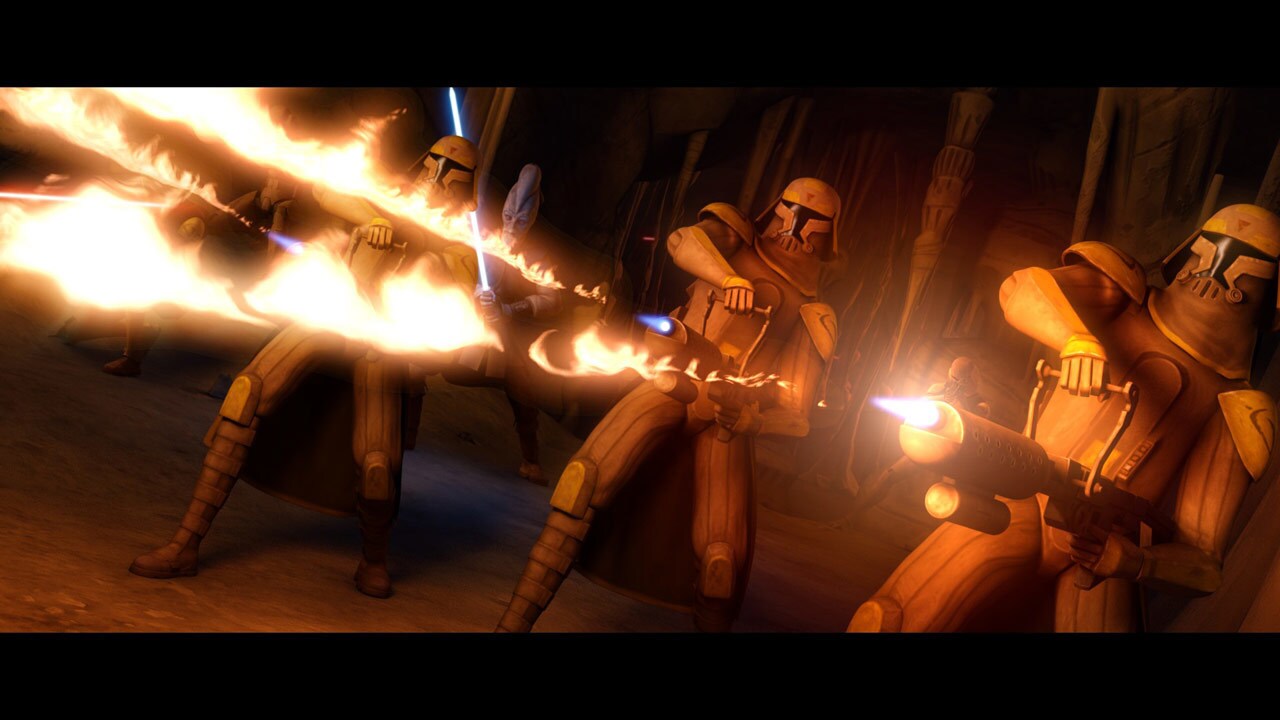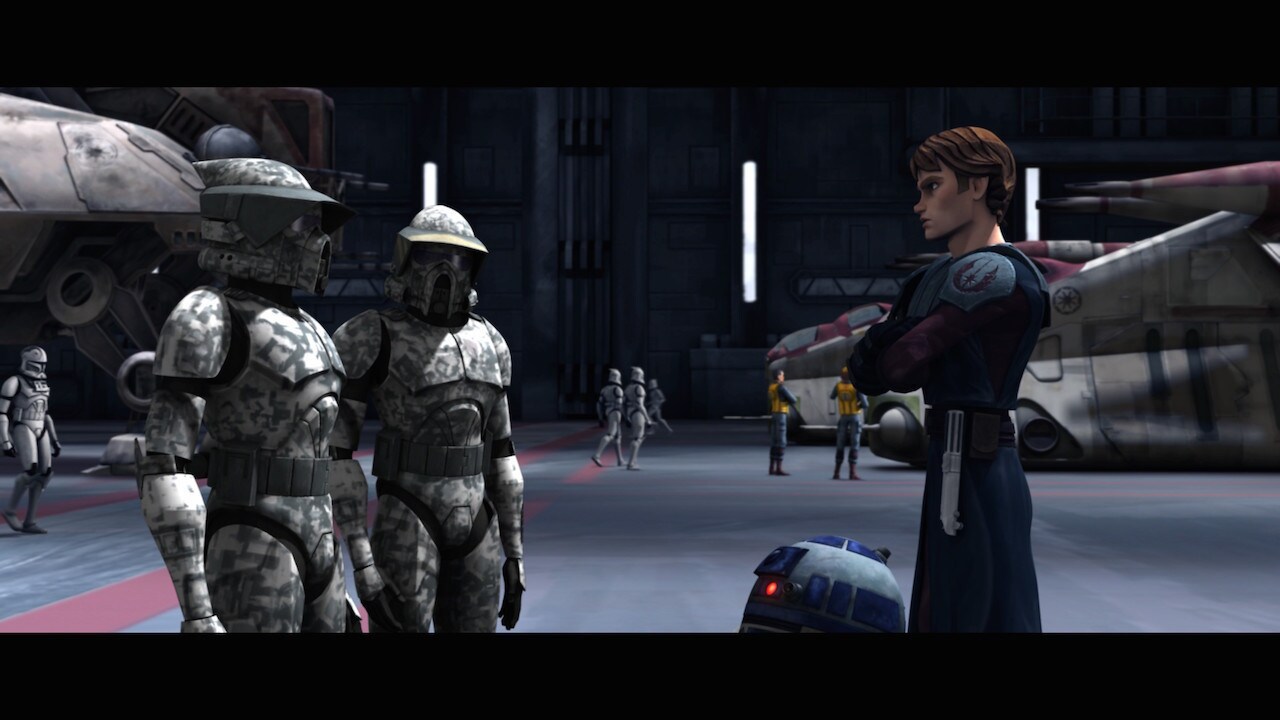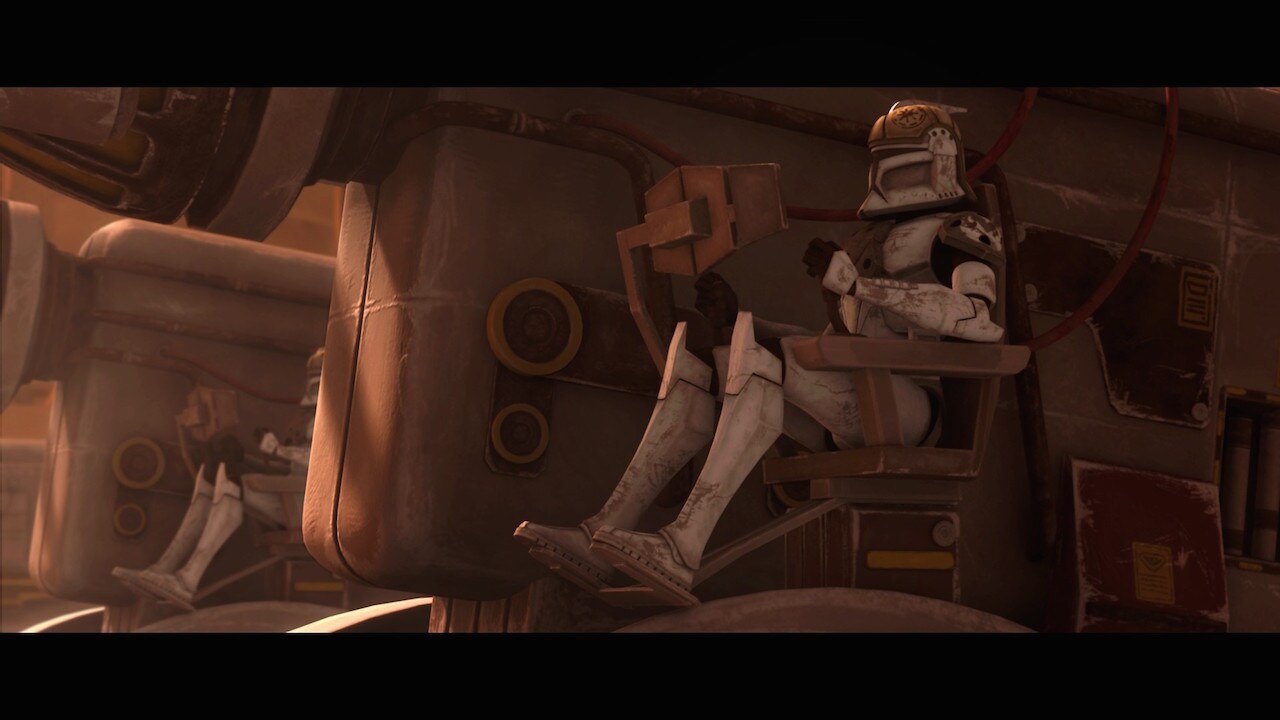© 2015 Disney

Clone Trooper Armor History Gallery
- 25 Images
-
At the beginning of the Clone Wars, clone troopers wore standard white armor designed for their use on Kamino. Because the Grand Army of the Republic was made up of genetically identical soldiers, this armor could be standardized and produced rapidly.
-
Initially, color splashes were used to denote the ranks of clone-trooper officers – a benefit for non-clones on the battlefield and clones whose helmet displays had broken down.
-
When they took command of the clone army, the Jedi Generals encouraged the clones to express their individuality, rather than thinking in lockstep. Individual clones adopted nicknames instead of numbers and chose their own hairstyles and tattoos, while clone units decorated their armor with unique color schemes and markings.
-
Commanders often modified their armor extensively, incorporating lessons learned on the battlefield and their own inclinations. Commanders chose blast-resistant kamas, pauldrons, macrobinoculars, communications packs and other gear as additions to their kits.
-
New and improved Phase II armor was introduced late in the war and quickly spread through the clone ranks after field-testing by ARC troopers. Improvements included better vision and armor plates that were both lighter and stronger.
-
During training on Kamino, cadets wore different armor and helmets than the standard-issue models worn in the field.
-
One frequently used armor variant was cold-assault gear, offering improved breath filters and insulation while fighting in arctic conditions. Captain Rex and his fellow troopers donned cold-assault gear for their mission on the frozen world Orto Plutonia.
-
Insulated armor was also needed for hot conditions, such as those experienced by troopers who fought with flamethrowers. Flame troopers under Commander Jet helped clear the catacombs when the Republic invaded Geonosis.
-
Advanced Recon Force (ARF) troopers wore lighter armor suited for stealth and speed. ARF troopers often rode AT-RTs in battle, and played a key role in retaking Ryloth from the Separatists.
-
ARF troopers in camouflaged Phase II armor fought doggedly in the defense of Kashyyyk, and helped hunt for Grandmaster Yoda after Supreme Chancellor Palpatine issued Order 66.
-
Clone gunners wore helmets with additional noise insulation and reinforced chest armor as safeguards against the kick and roar of the cannons they controlled.
-
Clone ordnance specialists disarmed unexploded munitions on the battlefield, and their armor bore bright orange markings. This distinctive armor offered no additional protection against explosions, but served as a warning to others that dangerous work was taking place.
-
Special ops clones were trained to move quickly and quietly and detect enemies at a distance, and wore advanced gear that improved their senses. These stealthy clones served with distinction in battles on Geonosis and in the Christophsis system.
-
Clone pilots saw themselves as a breed apart, selected early in their development and taught special skills. Their helmets had improved sensors and their armor featured additional life-support gear.
-
Like clone troopers, clone pilots received improvements to their gear as the Clone Wars ground on. The clone pilot Warthog wore an updated rig – customized to his liking -- during a mission to Aleen.
-
Pilots who flew experimental craft for the Republic, such as the stealth ship used by Anakin Skywalker at Christophsis, had their own unique armor.
-
By the final days of the war, clone pilots had new gear, with open-faced helmets that offered superior visibility during space battles.
-
Some battles of the Clone Wars were fought underwater, necessitating the use of SCUBA gear that was lighter than regular armor and featured fins, life-support gear, and propulsion packs.
-
The Republic’s independent-minded, highly trained ARC troopers were often the first to get new armor, with their field reports helping researchers improve gear before it was distributed more widely.
-
Republic commandos were among the most-respected units in the clone army, pursuing missions that no other soldiers could tackle. Commandos had their own specialized armor and gear, the sight of which inspired whispering and pointing among other clone troopers.
-
Clone scout troopers wore lightweight armor and were trained for recon work. Similar armor was worn a generation later by the Empire’s scout troopers.
-
BARC troopers wore helmets designed to focus attention forward, avoiding distractions that could be deadly at high speed.
-
Galactic marines were notable for the filtered visor they wore to keep out pollutants and other hazards. These forces saw action on Mygeeto at the end of the Clone Wars, where they eliminated the Jedi General Ki-Adi-Mundi.
-
Clone paratroopers were specially trained for airborne assaults, and wore unique “beehive” helmets and kamas. Paratroopers descending from gunships were on the front lines of the fighting on Utapau.
-
The Empire mothballed or recycled vast stocks of clone armor, replacing it with stormtrooper gear. But clone armor remained an occasional sight in the galaxy, as bounty hunters, pirates and others made use of scavenged armor plates. Such armor was also worn by a handful of renegade clones who’d survived the war and now sought to make their way in the universe.
Clone Trooper Armor History Gallery
TM & © Lucasfilm Ltd. All Rights Reserved





